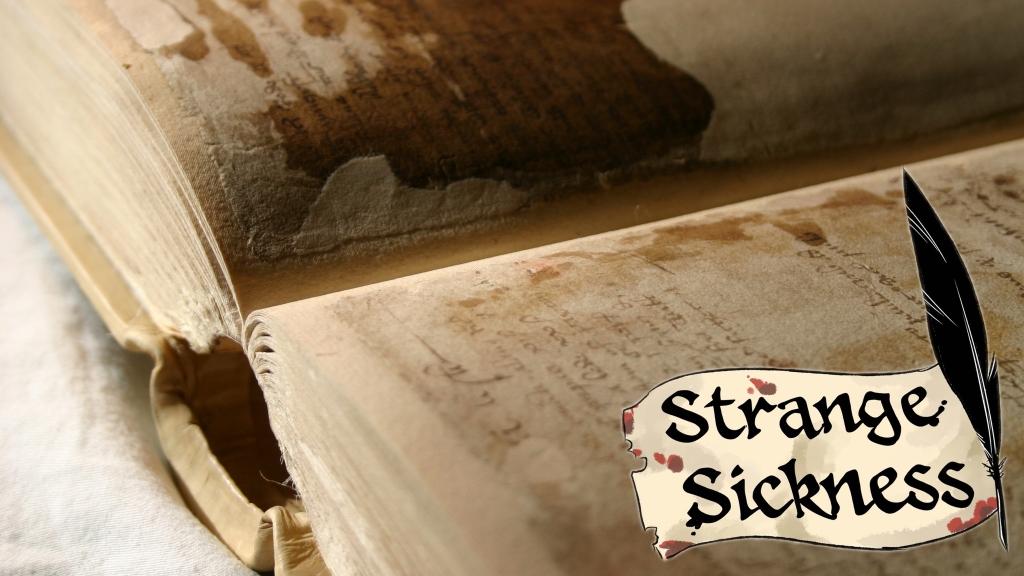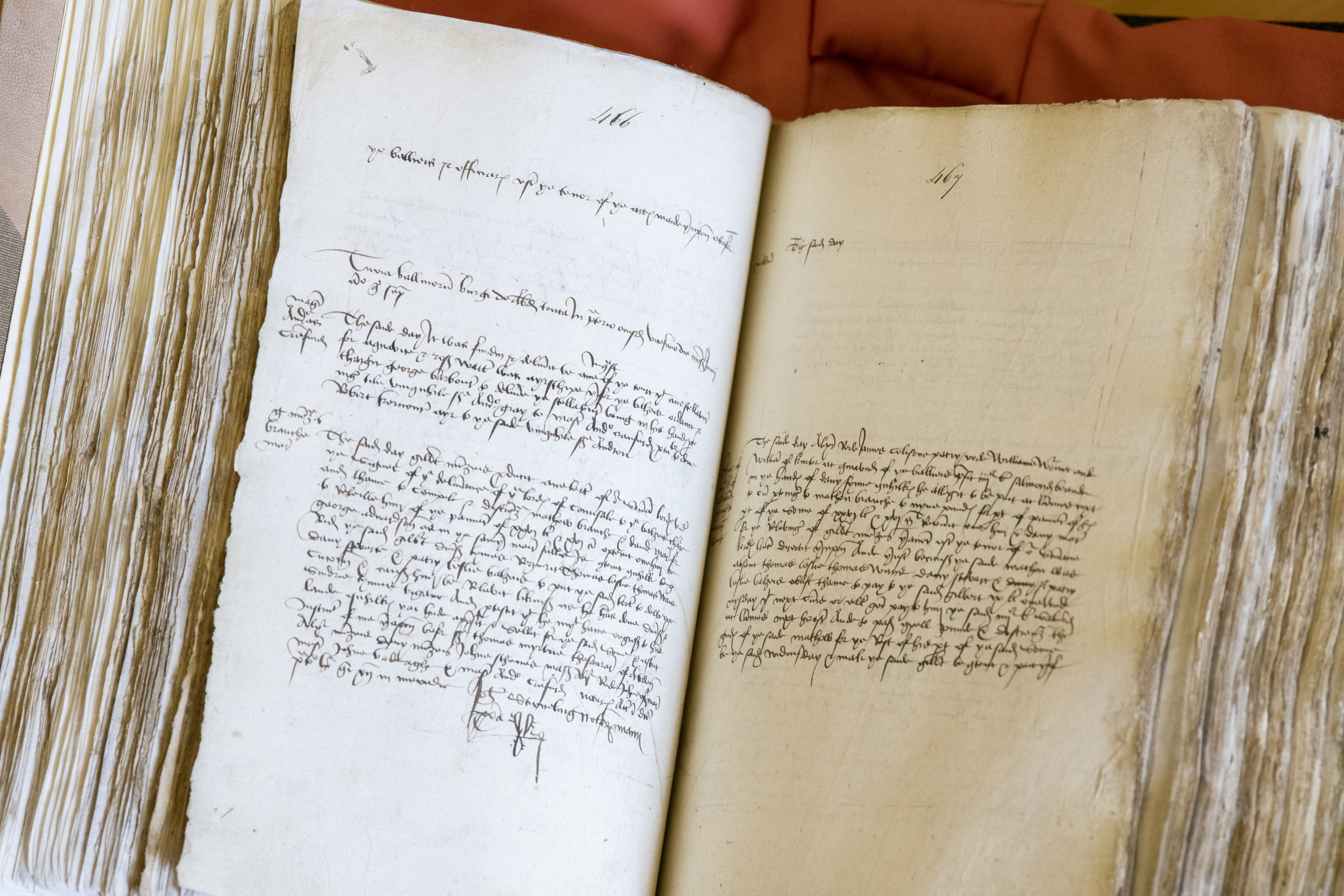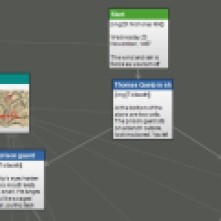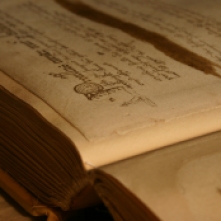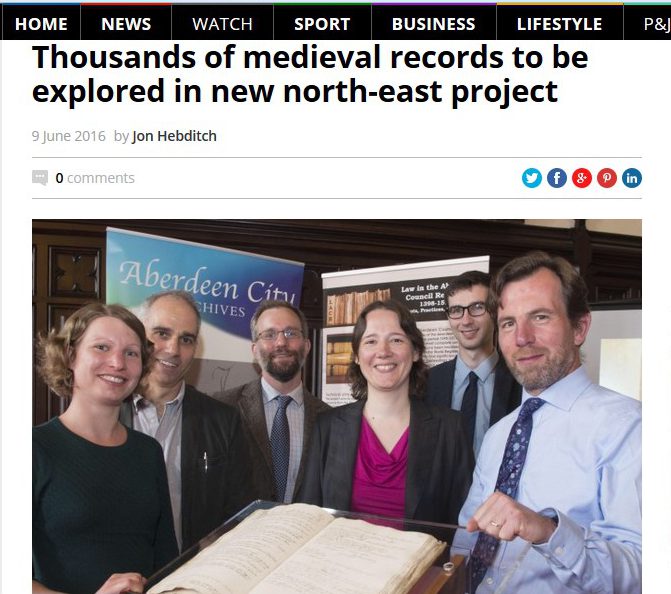
ARO-8-0466-02 detail. Photo credit: Sarah Christie/University of Aberdeen.
The following is a compilation of early references related to aquavite in Scotland:
Distillation of alcohol was an ancient scientific practice which came to be established in Europe by the twelfth century (especially at Salerno and Cologne).
1494-5 (ER, x, p. 487) Account of the chamberlain of the sheriffdom of Fife: ‘Et per liberacionem factam fratri Johanni Cor per preceptum compotorum rotulatoris, ut asserit, de mandata domini regis ad faciendum aqua vite infra hoc compotum, viij bolle brasii’ [=payment made to Friar John Cor for eight bolls of malt for making ‘aqua vite’].
1497 (TA, i, p. 373) ‘Item, to the barbour that brocht aqua vite to the King in Dunde, be the Kingis command ix s’.
1501 (TA, ii, p. 115) ‘Item, for I galloun of aqua vite to the powder, xxs iiij d’.
1503 (TA, ii, p. 361) ‘Item, for v ½ chopinnis of aqua vite to the curyis of quinta essencia xj s’.
1503 (TA, ii, p. 363) ‘Item, to the maister cuke, that he laid doun for glasses and flacatis for stilling of wateres and othir stuf, and for fire to the stillatouris, iij li. xiiij s’.
1505 (ARO-8-0466-02) ‘The saide day [20 June 1505] It was fundin and deliuerit be ane Inquest of the court that ane stellatour’ for aquavite and ros’ wattir was ayrschipe tharfor the balyeis ordanit and chargit george barbour’ to deliuere the stellatour’ being in his handis pertening tile vmquhile sere Androw gray to mastir Androw crafurd’ procurator to dene Robert Keruour’ ayr to the saide vmquhile ser Androu’.
1505 (Edin. Recs, i, pp. 101-104) Seal of Cause to Barbers and Surgeons, by the provost, bailies & council of Edinburgh [1 July 1505], including that no man ‘within this burgh mak nor sell ony aquavite within the samyn except the saidis maisteris brether and friemen of the saidis craftis…’
1506 (TA, iii, p. 183) ‘For aqua vite to the quinta essencia’; (TA, iii, p. 187) ‘Robert Herwort for aqua vitae taken from him, 14s’; (TA, iii, p. 188) ‘for vij quartis aqua vite to quinta essencia’; (TA, iii, pp. 332, 343, 344) further payments listed, &c.
1507 (TA, iv, p. 79) ‘wyne to the abbot of Tungland [=John Damien] to mak quinta essencia’; (TA, iv, p. 92) ‘Payit to William Foular, potingair, for potingary to the king and quene, distillatioun of wateris aqua vite’;
1508 (TA, iv, p. 122) ‘j galloun small aqua vite to the abbot of Tungland’ [=John Damien]; (TA, iv, p. 137) ‘For making of ane bos hed to ane stellatour of silvir weyand x unce iij quartaris of his aun stuf deliverit to Maister Alexander Ogilvy for quinta essencia’;
1518 (Reg. Episc. Aberd., ii, p. 174) [inventory of items in the wardrobe of Bishop Alexander Gordon of Aberdeen] ‘…The pypis of ane aqua vite falt’.
Date unknown. (Kelso Liber, ii, p. 448) A treatise on plague was composed by John of Burgundy about 1390, the original referring to eaue distilacion and eaue des herbes. A copy of the treatise was held at Kelso Abbey. A short, undated, translation into Middle Scots was kept at Kelso and that refers to ‘water stillit of thir iiij herbys…’. Neither the original nor the translation mentions eau de vie / aqua vitae, or alcohol.
Link here to the main post about the aquavite still.
Sources (in addition to Aberdeen Registers Online):
[Edin. Recs.] Extracts From the Records of the Burgh of Edinburgh, 1403-1528, ed. J. D. Marwick (Edinburgh, 1869)
[ER] The Exchequer Rolls of Scotland, ed. J. Stuart et al., 23 vols (Edinburgh, 1878–1908)
[Kelso Liber] Liber S. Marie de Calchou, ed. C. Innes, 2 vols (Edinburgh, 1846)
[Reg. Episc. Aberd.] Registrum episcopatus Aberdonensis: ecclesia cathedralis aberdonensis: regesta que extant in unum collecta, ed. C. Innes, 2 vols (Edinburgh, 1845)
[TA] Accounts of the Lord High Treasurer of Scotland, 1473–1498, ed. T. Dickson and J.B. Paul et al., 13 vols (Edinburgh, 1877–1978)
